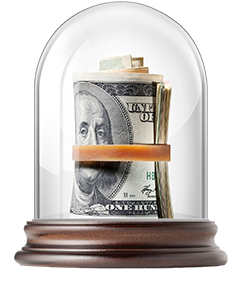Here’s a look at the new world of bank reconciliations and some ideas to use to ensure your bank account is accurate.
The bank reconciliation purpose
In a nutshell, a bank reconciliation ensures your account is accurate. This is done by comparing all your activity with what the bank is reporting.
The importance of timely bank reconciliations
There are several reasons for conducting these account reviews on a timely basis:
- Catch a mistake by the bank. Banks make mistakes. Reconciliations can help you catch these bank errors. And errors are more common with digital payment systems…often a small transposition or machine misread of a number can create a payment error.
- Catch a mistake by you. Yep, it’s difficult envisioning making an error, but that happens, too. It is easy to record the wrong payment amount. The only way to catch this is to look at your account and compare it to what you think you paid.
- Catch unauthorized use. If someone hacks into your mobile phone’s payment app and spends $20 of your money, how would you ever find out? Reconciliations uncover fraudulent activity you may have missed.
- Properly monitor automatic payments. With monthly payments automatically coming out of your account, it is easy to forget to account for these payments and have less in your account than you think you do. Timely reconciliations also help you identify ongoing payments that should be discontinued.
Tips for reconciling your accounts
Here are some tips for reconciling in the new world of banking.
- Reconcile every week (or every day!). Gone are the days when you need to wait for your monthly bank statement in the mail to reconcile your account. Use your bank’s online tools to reconcile once a week or even once a day. This will help identify problems as they occur and is especially important in identifying possible hacking or theft.
- Use your favorite app to capture your spending. Secure online applications are now replacing the traditional check register. You’ll still need to be disciplined to use the online tool when you spend money, so look for an application that is easy to record your spending.
- Combine reconciling with budgeting. Use your reconciliations as an opportunity to become better with budgeting your money. Use reporting functions to help classify your deposits and payments. Then compare them with what you think they should be. This moves the discipline from simple reconciliation to a more planned approach to comparing your budget to actual spending.
The way bank reconciliations are done may have changed over the past 20 years, but the vital role they play in maintaining your financial health will never disappear.
Which unique method of budgeting will work for you?
 You have your own unique personality, preferences and lifestyle. Likewise, how you manage and organize your finances can have its own personality, including how you budget. Here are five different methods of budgeting, each with a distinct way of helping you organize your spending and finances.
You have your own unique personality, preferences and lifestyle. Likewise, how you manage and organize your finances can have its own personality, including how you budget. Here are five different methods of budgeting, each with a distinct way of helping you organize your spending and finances.
- Traditional budget. Use last year’s budget as a base, make any necessary adjustments due to changes in your income or expenses, and create your budget by taking your income minus your expenses to equal the amount you have to spend.
- Envelope budget. Keep a set amount of cash for the month in envelopes labeled with an expense category like groceries, clothing, eating out, entertainment, etc. Use one envelope per expense category. If you run out of money in one envelope, you can dip into other envelopes, but this will obviously impact spending in those areas.
- Reverse budget. Instead of stashing away the money left over after you’re done spending for the month, first take out your portion for savings and then spend the amount of money that remains. Reverse budgeting is an effective way to prioritize saving for your future retirement, an emergency or rainy-day fund, or other big expenses like a vacation, a new car, or a down payment on a house.
- Zero-based budget. Know where each dollar is going and record every single dollar spent. Also called the zero-sum or down-to-the-dollar budget, this method helps you get specific about spending and keeping track of all your dollars. Instead of one amount allotted for food, you know exactly how much you will spend on groceries, lunch while at work, and dining out. Instead of one amount allotted for savings, you know exactly how much you are putting into retirement, loan repayment, and emergency savings.
- 50/20/30 budget. Stick to three spending categories. Each month, 50% of your take-home income goes toward needs, 20% toward savings, and 30% toward wants. Examples of needs are housing or car payments and groceries. Savings could be retirement money, paying off loans, and emergency funds. Wants include things like shopping, vacation, or entertainment. Less detailed than the zero-based or envelope methods but more detailed than traditional or reverse budgeting, the 50/20/30 method helps you monitor money habits by helping you stick to three categories every month.
The best budget approach? One that works for you and one that you will continue to use. So pick an approach and try it. It can really change how you spend your money.
As always, should you have any questions or concerns regarding your tax situation please feel free to call.
Last week we gave you the first half of a list of essential economic concepts that every high school student should understand. Here’s the second half of the list!
The strength of investing – The most valuable investment a young person can make is in themselves. Whether it is a college degree or a trade school diploma, your child can create tremendous value in skills that will provide a positive financial return each year.
Mutual fund and stock understanding – Once your child grasps self-investment, next consider teaching some of the basic investment alternatives available to them. Stocks and mutual funds are the most common, but also consider explaining bonds, CD’s, annuities and other investment tools.
Budgeting – Help your student create a basic budget and then help them track their saving and spending against the budget. Don’t forget to mention an emergency fund to prepare for the surprises in life.
Cash flow – The hard way to learn the lesson of cash flow is when bill collectors are calling and there simply isn’t money to pay them. When creating an initial budget, show your child the flow of funds each month. An easy example of this is to show the flow of funds that relate to car. There are everyday expenses like fuel, there are monthly expenses like a car payment or insurance, and there are periodic expenses for licensing and maintenance.
Calculation of net worth – Assets (what you own) minus liabilities (what you owe others) equals net worth. This is the math of banks and businesses. The sooner your child understands this concept, the easier it will be to plan to purchase a car, a house, or any other item of value.
The value of identity – The value of a personal identity is the most undervalued asset owned by your child. Online media may seem free, but your child has paid for this access with their identity. With the advent of identity theft, government/employer access to personal online information and the proliferation of online advertising, consider helping your child understand the value of having a small online footprint. Help them establish healthy habits that will protect their personal information.
I hope you find this information helpful in preparing your child for a sound financial future.